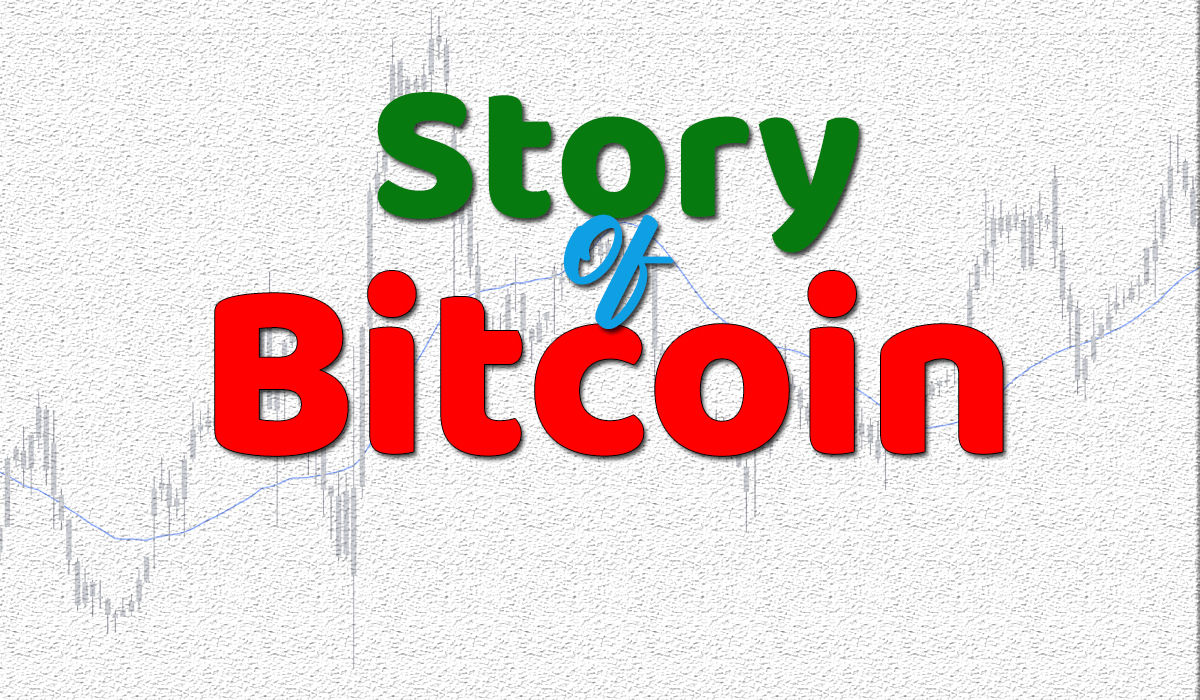What if I told you that a digital currency created by a mysterious stranger is now worth over a trillion dollars?
That’s the incredible story of Bitcoin. Let’s start from the very beginning.
The Mystery That Started It All (2008)
Picture this: The world’s banks are collapsing. People are losing their homes. Trust in the financial system is at an all-time low.

Then, on October 31, 2008, someone using the name “Satoshi Nakamoto” sends an email to a cryptography mailing list. Attached is a document that would change everything: “Bitcoin: A Peer-to-Peer Electronic Cash System.”
Here’s the mind-blowing part: Nobody knows who Satoshi Nakamoto really is. Not even today. This person (or group) created something worth billions and then… disappeared. They left behind roughly one million bitcoins that have never been touched.
The First Bitcoin Ever Created (2009)
On January 3, 2009, Satoshi created the very first bitcoin. Hidden in that first block of code was a message: “Chancellor on brink of second bailout for banks.”
Why include that newspaper headline? It was Satoshi’s way of saying: “We don’t need banks anymore.”
Ten days later, Satoshi sent 10 bitcoins to a programmer named Hal Finney. That was the first Bitcoin transaction ever. Today, those 10 bitcoins would be worth hundreds of thousands of dollars.
The Most Expensive Pizza in History (2010)
Fast forward to May 22, 2010. A programmer named Laszlo Hanyecz was hungry. He offered to pay someone 10,000 bitcoins for two pizzas.
Someone took him up on it. Laszlo got his pizzas.
Want to know the crazy part? Those 10,000 bitcoins would be worth over $400 million today. That’s right—$400 million for two pizzas!
This day is now celebrated every year as “Bitcoin Pizza Day.” It was the first time Bitcoin was used to buy something in the real world.
When Bitcoin Hit $1 (2011)
In early 2011, something exciting happened: One bitcoin became worth one US dollar.
People started paying attention. News articles were written. More people wanted to buy Bitcoin.
But there was a problem. Some people started using Bitcoin for illegal things. A website called Silk Road let people buy drugs using Bitcoin. This gave Bitcoin a bad reputation that it’s still trying to shake off.
Then, Satoshi Nakamoto vanished. In April 2011, they sent one last email saying they’d “moved on to other things.” And that was it. Gone forever.
The Roller Coaster Begins (2011-2013)
If you thought the stock market was wild, Bitcoin was on another level.
In June 2011, Bitcoin shot up to $31. Amazing, right? But then it crashed to just $2 by November. People who bought at the top lost over 90% of their money.
But Bitcoin didn’t die. It kept going.
By late 2013, something incredible happened: Bitcoin reached $1,000! In just two years, it had gone from $2 to $1,000. Early believers were becoming millionaires.
The Biggest Bitcoin Heist (2014)
Then disaster struck.
Mt. Gox was the biggest place to buy and sell Bitcoin. It handled 70% of all Bitcoin trades. In February 2014, it announced that 850,000 bitcoins had been stolen—worth about $450 million at the time.
Think about that: Almost a billion dollars’ worth of Bitcoin, gone.
The price crashed. People said Bitcoin was finished. News headlines declared it dead.
But something strange happened. Bitcoin survived. The network kept running. People kept believing.
Slowly Building Trust (2014-2016)
Despite the Mt. Gox disaster, big companies started accepting Bitcoin:
- Microsoft let you buy apps and games with it
- Dell sold computers for Bitcoin
- You could buy furniture from Overstock.com
The first Bitcoin ATM appeared in Vancouver. Universities started teaching classes about Bitcoin. Smart people in Silicon Valley were investing millions into Bitcoin companies.
Bitcoin wasn’t just surviving—it was growing up.
The Year Everything Changed (2017)
If you were alive in 2017 and didn’t hear about Bitcoin, you must have been living under a rock.
Bitcoin started the year at $1,000. Then it just kept climbing:
- $2,000 in May
- $5,000 in October
- $10,000 in November
- Almost $20,000 in December!
Your uncle was talking about it. Your hairdresser was asking about it. Everyone wanted to know: “Should I buy Bitcoin?”
News channels couldn’t stop covering it. People were becoming millionaires overnight. Stories emerged of people who’d bought $100 worth years ago that was now worth millions.
It was absolute madness.
The Crash (2018)
What goes up must come down.
Throughout 2018, Bitcoin fell and fell and fell. By December, it was back down to $3,200. People who bought at the top had lost over 80% of their money.
The media that had praised Bitcoin now declared it dead (again). Many people who’d jumped in during the hype sold at huge losses and swore they’d never touch cryptocurrency again.
This period became known as the “Crypto Winter.”
The Quiet Years (2019-2020)
While the price was down, something important was happening behind the scenes. Bitcoin wasn’t dying—it was maturing.
Big banks that had called Bitcoin a scam started quietly researching blockchain technology. New tools were being built to make Bitcoin easier and safer to use.
Then 2020 happened. COVID-19 shut down the world. Governments started printing massive amounts of money. People started worrying about inflation.
And they remembered Bitcoin. With only 21 million bitcoins that will ever exist, some people started calling it “digital gold.”
The Big Players Arrive (2020-2021)
In August 2020, a company called MicroStrategy did something shocking: They spent $250 million of company money to buy Bitcoin.
Not just the CEO buying Bitcoin personally—the company itself was treating Bitcoin like gold or cash.
Then came the floodgates:
- PayPal said you could buy Bitcoin on their platform
- Tesla bought $1.5 billion worth of Bitcoin
- Major banks started offering Bitcoin to their wealthy clients
The biggest moment? In September 2021, the entire country of El Salvador made Bitcoin official money. You could walk into any store and pay with Bitcoin, just like regular cash.
Bitcoin reached a new all-time high: nearly $69,000 per coin.
More Turbulence (2022)
Just when it seemed Bitcoin had finally “made it,” 2022 brought new challenges.
Several big cryptocurrency companies collapsed. The most shocking was FTX, run by a young billionaire named Sam Bankman-Fried. It turned out he’d been stealing customer money. The company went bankrupt overnight.
Bitcoin’s price fell below $20,000. People who’d bought at the top were hurting again.
But here’s what’s interesting: Through all these company failures, Bitcoin itself never failed. The Bitcoin network kept running perfectly, 24/7, just like it had since 2009.
Where We Are Now (2023-2025)
Something remarkable has happened recently.
In January 2024, the US government approved Bitcoin ETFs—these are investment funds that regular people can buy through their normal brokerage accounts, just like stocks.
BlackRock, the world’s largest investment manager, now offers a Bitcoin fund. This is the same company that manages trillions of dollars for retirement funds and pensions.
More countries are exploring Bitcoin. More companies are adding it to their balance sheets. The technology behind Bitcoin is being used for everything from tracking supply chains to creating digital art.
Bitcoin has gone through four “halvings”—events that cut the rate of new Bitcoin creation in half. The most recent was in April 2024. Each time this has happened historically, the price has eventually gone up significantly.
So What Exactly Is Bitcoin?
Let me explain it simply:
Bitcoin is digital money that no government or company controls.
Instead of a bank keeping track of your money, thousands of computers around the world maintain a shared record called a “blockchain.” Every transaction is recorded there, and everyone can see it (though they can’t see your name, just numbers and codes).
There will only ever be 21 million bitcoins. Ever. That’s it. No government can print more. No company can create more.
Right now, about 19.5 million have been “mined” (created through a complex computer process). The rest will slowly be created over the next 100+ years.
Why Do People Care About Bitcoin?
Different people see Bitcoin differently:
Some see it as digital gold – A way to store value that governments can’t inflate away by printing more money.
Some see it as freedom money – People in countries with unstable currencies or authoritarian governments use it to protect their wealth.
Some see it as the future of money – They believe eventually we’ll all be using Bitcoin instead of dollars or euros.
Some see it as an investment – They hope the price will keep going up as more people adopt it.
Some see it as a technology revolution – The blockchain technology behind Bitcoin could change many industries.
The Big Questions That Remain
Will Bitcoin become everyday money? Right now, most people don’t use Bitcoin to buy coffee. Transactions can be slow and fees can be high when the network is busy.
What about the environment? Bitcoin mining uses a lot of electricity. Some argue this is wasteful; others point out that much of it comes from renewable energy and that traditional banking also uses enormous amounts of energy.
How will governments regulate it? Some countries have banned it. Others are embracing it. Most are still figuring it out.
Who is Satoshi Nakamoto? This mystery may never be solved. Whoever they are, they’re sitting on billions of dollars they’ve never touched.
The Bottom Line
Bitcoin went from an idea in an email to a trillion-dollar asset in just 15 years.
It’s been declared dead by the media over 400 times. Yet it’s still here, stronger than ever.
It’s survived hacks, crashes, bans, scandals, and critics. Thousands of people have become millionaires from it. Thousands of others have lost money.
Love it or hate it, you can’t ignore it. Bitcoin has changed how we think about money, technology, and financial freedom.
The real question isn’t whether Bitcoin will survive—it’s already proven it can do that.
The real question is: What comes next?
Will your grandchildren use Bitcoin the way you use credit cards? Will it become as normal as email? Or will something better come along and replace it?
Nobody knows for sure. But one thing is certain: Bitcoin has already earned its place in history as one of the most fascinating financial experiments of our time.
And the story is far from over.
For more content, you can check here.
You can follow my social platforms here.
500+ YouTube content. You can subscribe for more live content here.
2200+ Twitter Posting on live proof here.
Follow the Facebook page for updates.




